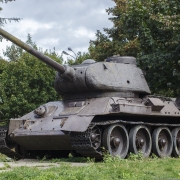What is the ASEAN Declaration on the South China Sea?
Topic of Study [For H2 History Students]:
Paper 2: Regional Conflicts and Co-operation
Source Based Case Study
Theme III Chapter 2: ASEAN (Growth and Development of ASEAN: Building regional peace and security – relations between ASEAN and external powers)
Historical context: Contestation of maritime boundaries and islets
The South China Sea dispute involves the contestation of islets and maritime boundaries by different countries, both ASEAN and non-ASEAN related. In the early 1990s, claimants in the ASEAN-6 had to deal with external powers, namely Vietnam (until it joined ASEAN in 1995) and China. Within the South China Sea lies one of the most hotly contested Spratly Islands, which are claimed by China, Vietnam, Malaysia, the Philippines and Brunei.
Given that the Cold War came to an end by the late 1980s, the American disengagement had left behind a power vacuum in Southeast Asia, giving China the opportunity to fill the void up. To ally concerns among member nations, ASEAN made collective efforts to engage external powers amicably, as seen by its establishment of the ASEAN Regional Forum (ARF) in 1994.
In this article, we will take a closer look at the ASEAN Declaration of 1992.
ASEAN Ministerial Meeting of 1992
During the 25th ASEAN Ministerial Meeting in July 1992, the regional organisation formed the ASEAN Declaration on the South China Sea as a tangible response to manage inter-state tensions in South China Sea.
Also known as the ‘Manila Declaration‘, it urged claimants to exercise self-restraint and consider joint cooperation amicably. The Declaration was built on the foundation of the Treaty of Amity and Cooperation (TAC) of 1976, which advocated principles of non-aggression.
1. EMPHASIZE the necessity to resolve all sovereignty and jurisdictional issues pertaining to the South China Sea by peaceful means, without resort to force;
2. URGE all parties concerned to exercise restraint with the view to creating a positive climate for the eventual resolution of all disputes;
[…] 4. COMMEND all parties concerned to apply the principles contained in the Treaty of Amity and Cooperation in Southeast Asia as the basis for establishing a code of international conduct over the South China Sea;
An excerpt taken from the 1992 ASEAN Declaration on the South China Sea, 22 July 1992.
All bark and no bite?
However, not all external powers were supportive of the ASEAN Declaration. Similar to the USA, China was initially supportive of the Declaration. Yet, it was responsible for the ‘Mischief Reef‘ incident in February 1995. The Philippines discovered Chinese military installations being built at the Reef, antagonising other claimants. In retaliation, the Philippines arrested Chinese fishermen and destroyed Chinese territorial markers in following month.
Despite having expressed support for the ASEAN Declaration on the South China Sea during the 26th ASEAN Ministerial Meeting in July 1992, Beijing built structures on the Mischief Reef, which was also claimed by the Philippines, in 1994. Soon after the Mischief Reef episode in early 1995, Filipino and Chinese representatives met in August in an attempt to resolve their differences. A Joint Statement on PRC-RP Consultations on the South China Sea and on Other Areas of Cooperation was subsequently signed on 10 August 1995. Despites this, in January 1999, the Chinese were again constructing structures on another part of Mischief Reef.
An excerpt taken from “The South China Sea Dispute Revisited” by Ang Cheng Guan.
Notably, the USA took a rather hands-off approach in response to the South China Sea dispute in spite of its expressed interest to support the ASEAN Declaration. Even after the Mischief Reef incident, the USA insisted that the 1951 Mutual Defense Treaty did not apply to the disputed occupation of the Mischief Reef, leaving its former Cold War ally disappointed.
ASEAN recognized the intrusion as a test of its 1992 Declaration and, acting with unprecedented cohesion, called “specifically” for the “early resolution of the problems caused by recent developments in Mischief Reef”. ASEAN’s remarkable success in forcing Chinese officials to discuss the South China Sea — despite their insistence that it should be dealt with bilaterally and not between China and ASEAN as a group — left the Americans largely unmoved.
[…] Washington made it clear that the provisions of their 1951 Mutual Defence Treaty did not apply, leaving a disappointed Philippines, which lacked a credible defence force, to fend for itself. The failure of U.S. surveillance satellites and sea or air patrols to detect six months or more of Chinese construction on Mischief Reef aggravated bilateral relations.
An excerpt taken from “Entering Unchartered Waters? ASEAN and the South China Sea” by Pavin Chachavalpongpun.
What can we learn from this article?
Consider the following question:
– How far do you agree that ASEAN was successful in maintaining regional security in the post-Cold War period?
Join our JC History Tuition to learn more about ASEAN. The H2 and H1 History Tuition feature online discussion and writing practices to enhance your knowledge application skills. Get useful study notes and clarify your doubts on the subject with the tutor. You can also follow our Telegram Channel to get useful updates.
We have other JC tuition classes, such as JC Math Tuition and JC Chemistry Tuition. For Secondary Tuition, we provide Secondary English Tuition, Secondary Math tuition, Secondary Chemistry Tuition, Social Studies Tuition, Geography, History Tuition and Secondary Economics Tuition. For Primary Tuition, we have Primary English, Math and Science Tuition. Call 9658 5789 to find out more.




